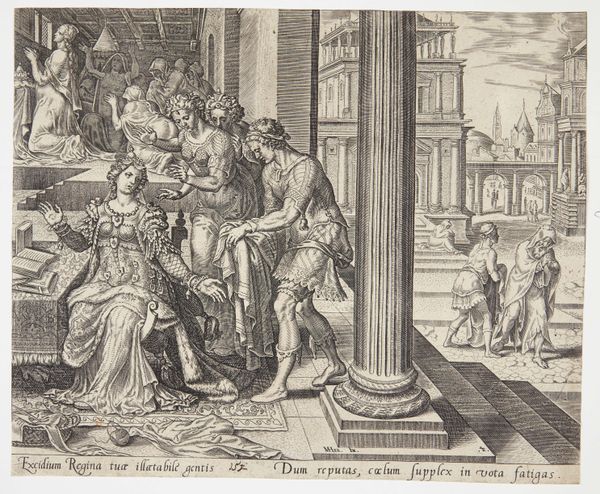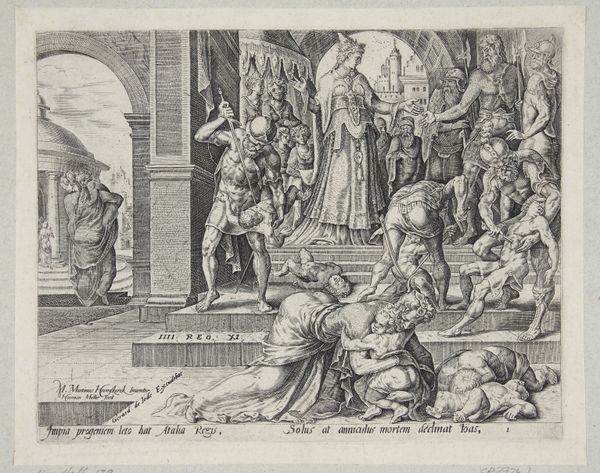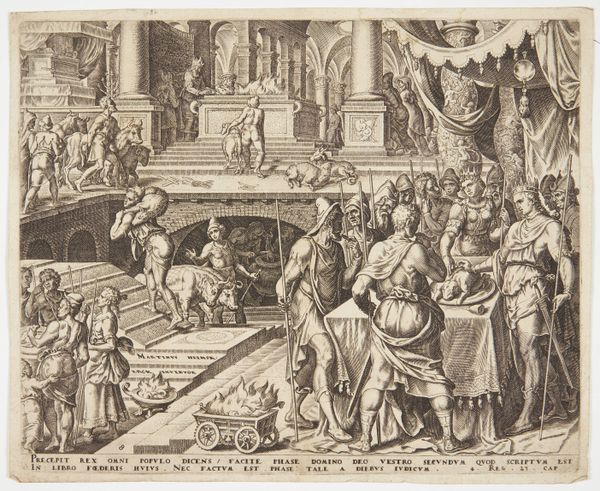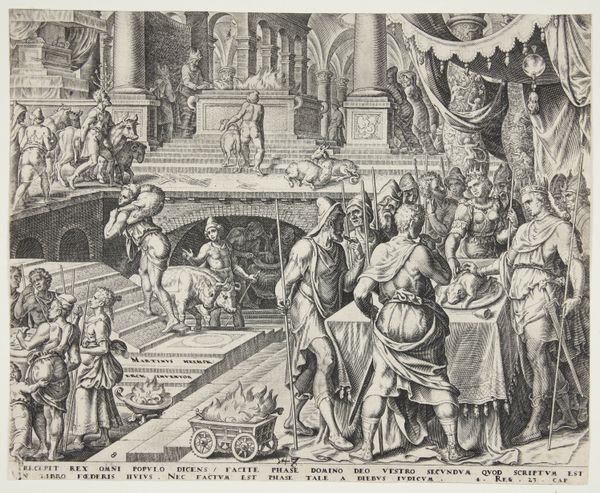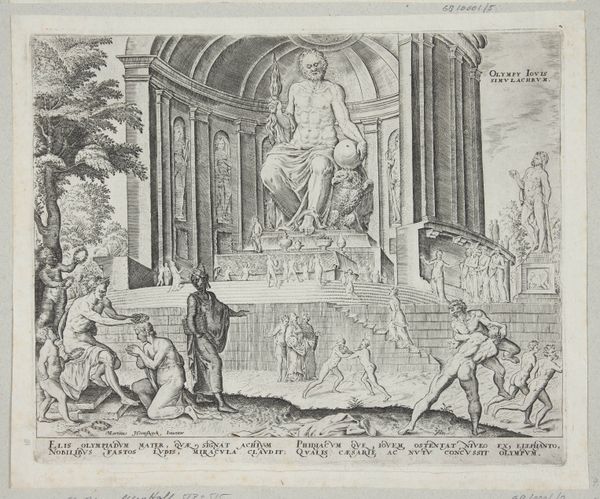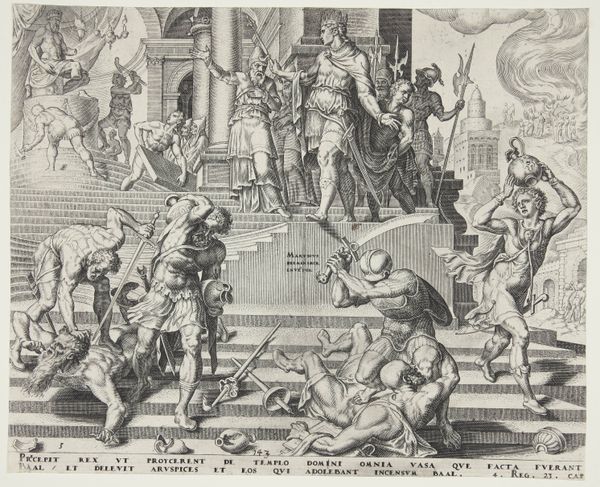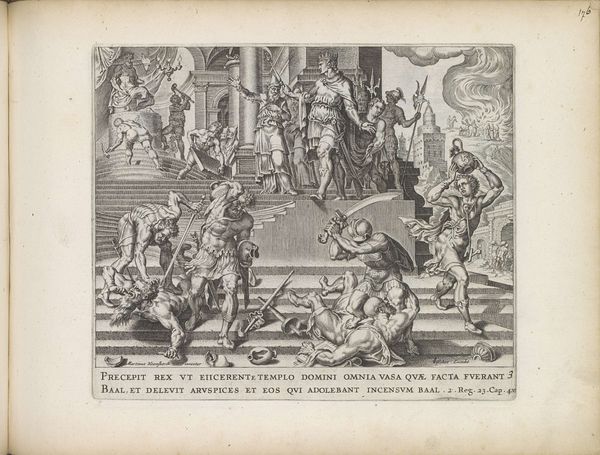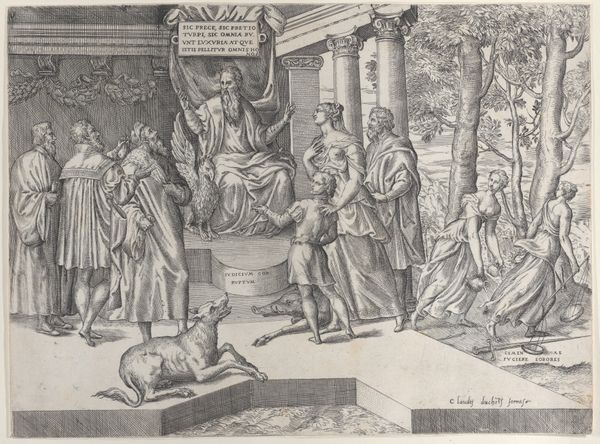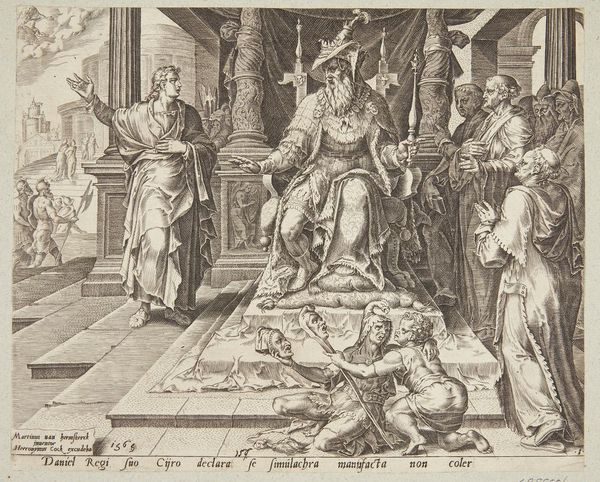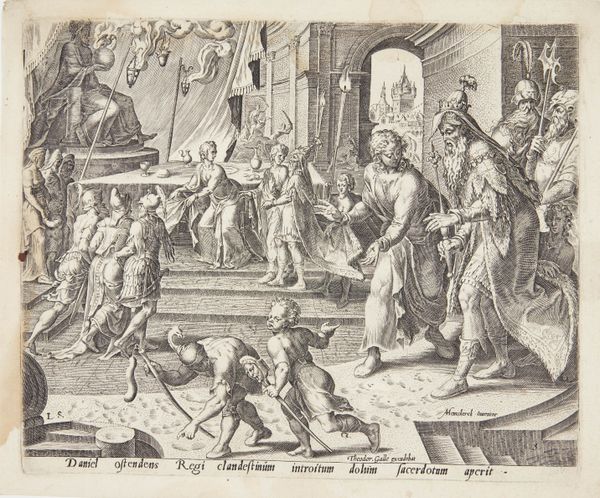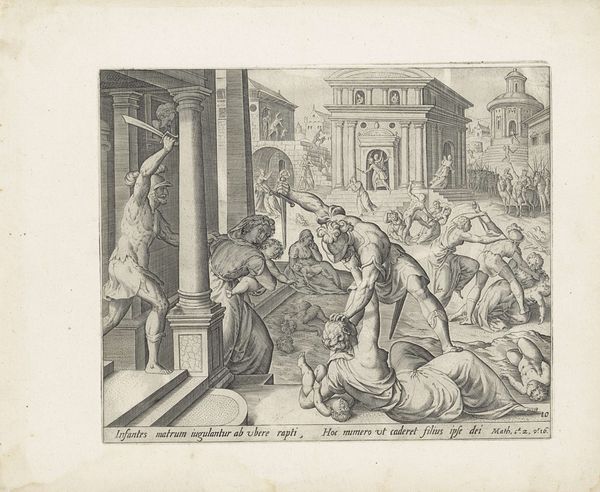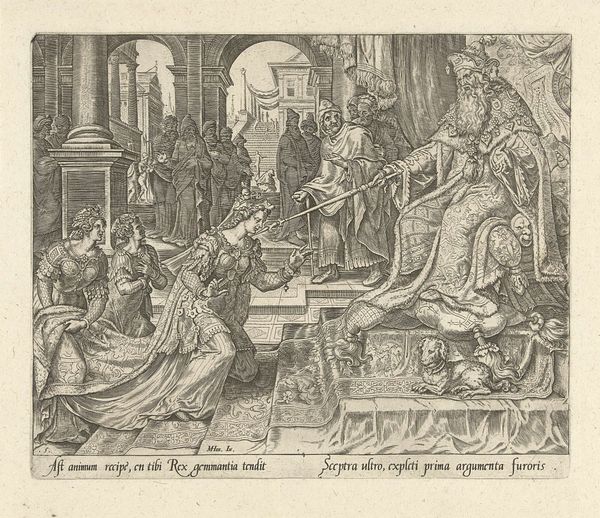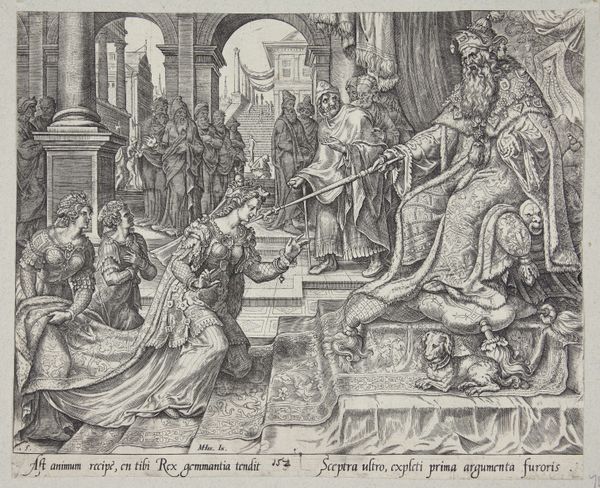
The destruction of the temple of Ashtoreth, Chemosh and Milcom 1567 - 1570
0:00
0:00
print, engraving
#
ink drawing
#
narrative-art
# print
#
mannerism
#
figuration
#
history-painting
#
engraving
Dimensions: 212 mm (height) x 265 mm (width) (monteringsmaal), 202 mm (height) x 249 mm (width) (plademaal)
Philips Galle made this engraving, *The Destruction of the Temple of Ashtoreth, Chemosh and Milcom*, in the late 16th century. The image shows the Old Testament story of King Josiah destroying idols. Galle worked in Antwerp, a center for printmaking at the time. The engraving’s clean lines and classical architecture reflect the influence of the Italian Renaissance, which had spread north by this period. But we should ask: Why this subject, at this time? Northern Europe was then in the throes of the Protestant Reformation, where the destruction of idols was a common act by reformers. Did Galle intend a parallel between the Old Testament story and contemporary events? It’s hard to say for sure. But as historians, we look for clues in the culture and institutions of the time. The Reformation certainly created a market for images of idol destruction. This print may reflect the religious conflicts of the time, or it may simply be a commercial venture capitalizing on current events.
Comments
No comments
Be the first to comment and join the conversation on the ultimate creative platform.

